Spring Goose Control: Tips & Tools for Deterring Canada Geese
Spring brings warmer weather, blooming landscapes, and a surge in Canada goose activity. As geese return from migration or settle into residential areas, they can create serious problems for property owners. Their aggressive behavior, excessive droppings, and tendency to overgraze lawns make them a nuisance in parks, golf courses, and commercial properties. Managing geese in the spring is critical before they establish nesting sites and become more difficult to move. With the right strategies and tools, property owners can keep geese at bay while maintaining a humane and effective approach to bird control.
Why Canada Geese Are a Problem in Spring
Understanding Seasonal Goose Behavior
Canada geese are highly adaptable birds that thrive in urban, suburban, and rural environments. In early spring, they seek out ideal nesting locations near water sources, open fields, and manicured lawns. Once they settle in, geese become territorial and can be aggressive toward people and pets. During this time, preventing nesting is key to reducing long-term goose problems.
Common Issues Caused by Geese
Geese can quickly turn a well-maintained property into a mess. Their droppings not only create an unsightly and unhygienic environment but can also carry bacteria and parasites harmful to humans and animals. Overgrazing by geese damages lawns, golf courses, and sports fields, leading to costly repairs. Additionally, aggressive behavior from nesting geese can pose a safety risk, particularly in public spaces.
Legal Considerations for Goose Control
Canada geese are federally protected under the Migratory Bird Treaty Act, meaning certain control measures require permits. Nest removal, egg addling, and other interventions must be done in compliance with regulations. Non-lethal deterrents, such as sound devices, visual repellents, and habitat modifications, are effective and legal ways to manage geese without violating wildlife protection laws.
Proactive Strategies to Keep Geese Away
Habitat Modification to Reduce Attraction
Geese prefer open, grassy areas near water where they can easily spot predators. Reducing the appeal of these spaces helps deter flocks before they settle. Allowing grass to grow taller, planting dense shrubbery along shorelines, and minimizing large, open spaces can make the area less inviting.
The Role of Water Access in Goose Presence
Geese are drawn to ponds, lakes, and retention basins, using them for safety and nesting. Installing floating covers can help limit access to the water and make the area less desirable. For properties with small ponds, adding aerators or fountains can create movement that discourages geese from settling.
Landscaping Changes to Deter Geese
Certain plants and landscaping features naturally deter geese. Tall grasses, thorny bushes, and dense vegetation along water edges make it harder for geese to move between land and water. Using gravel or mulch instead of grass in key areas can further discourage geese from lingering on a property.
Effective Goose Deterrent Tools
Sonic and Ultrasonic Repellents
Sonic deterrents, like the GooseBuster®, use real Canada goose distress calls and alarm signals to scare geese away. These devices utilize goose alert and alarm communication and create an environment that feels unsafe for them.
Visual Deterrents & Scare Tactics
Geese rely on their sight to assess threats. Predator decoys, such as coyote or alligator replicas, can create the illusion of danger. Reflective deterrents, like Irri-Tape®, use light and movement to startle geese. Motion-activated sprinklers and flashing lights further enhance the effectiveness of visual deterrents.
Physical Barriers and Exclusion Methods
Restricting access to preferred nesting and feeding areas is one of the most effective long-term strategies. Installing low fences or bird netting around high-traffic areas can prevent geese from walking onto properties. Ledge exclusion systems also make ledges and flat surfaces unappealing for geese.
Liquid and Taste Aversions
Goose-repelling liquids such as Bird Stop® create an unpleasant taste on grass, discouraging feeding. These non-toxic solutions are safe for people and pets while preventing geese from returning to treated areas. Multiple applications may be needed, especially after heavy rainfall.
Best Practices for Long-Term Goose Management
Combining Multiple Deterrents for Maximum Effectiveness
No single method works on its own for long-term goose control. A combination of habitat modification, sound deterrents, visual repellents, and taste aversions is the best approach. Alternating and rotating deterrents also prevents geese from becoming accustomed to any one method.
Regular Maintenance and Monitoring
Even effective deterrents require maintenance. Checking sound devices, repositioning decoys, and reapplying repellents ensure consistent results. Monitoring goose activity helps property owners adapt their strategies based on seasonal changes.
Community and Property Management Strategies
For larger properties, such as golf courses, parks, and residential communities, coordinated efforts yield the best results. Educating staff and residents about not feeding geese, enforcing deterrent measures, and maintaining deterrent tools collectively reduces goose populations over time.
Choosing the Right Goose Control Solutions
Factors to Consider
Each property has unique challenges when it comes to goose control. The size of the area, proximity to water, level of human activity, and budget all play a role in determining the best deterrents. For persistent goose problems, professional guidance may be necessary.
Professional vs. DIY Goose Control
Many deterrent options are effective for DIY use, such as sound repellers, visual deterrents, and taste aversions. However, properties with large goose populations may require professional intervention. Experts can assess the site, recommend advanced deterrents, and assist with regulatory compliance for humane goose management.
Managing geese in the spring is essential for preventing long-term property damage and health risks. With the right mix of deterrents and proactive strategies, property owners can keep their spaces goose-free while ensuring humane treatment of wildlife.


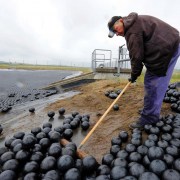

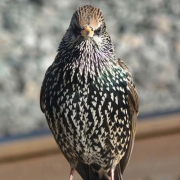
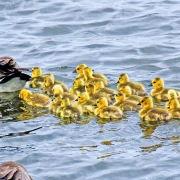
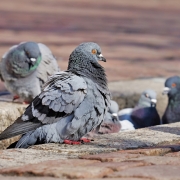
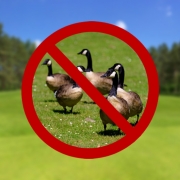


Leave a Reply
Want to join the discussion?Feel free to contribute!